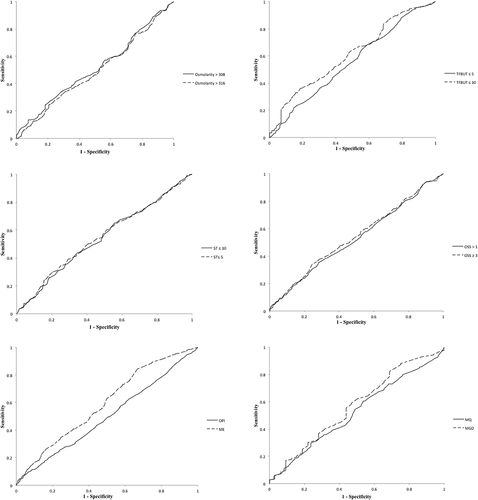Figures & data
Figure 1. Subjects demographics: Bar graph showing the age and gender distribution among 1090 subjects tested for dry eye disease.

Table 1. Summary of ROC curve parameters and distribution of clinical tests.
Figure 2. ROC curve is displayed to determine the optimum balanced sensitivity and specificity of OSDI to predict pathological osmolarity, TFBUT, OPI, ST, OSS, ME, MQ and MGD. Abbreviations: tear film break-up time (TFBUT), ocular protection index (OPI), Schirmer I test (ST), ocular surface staining (OSS, Oxford Grading Scheme), meibum expressibility (ME), meibum quality (MQ), meibomian gland disease (MGD).

